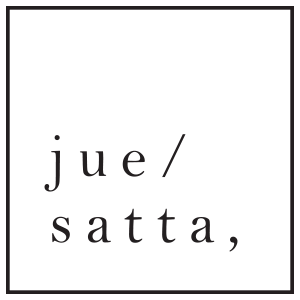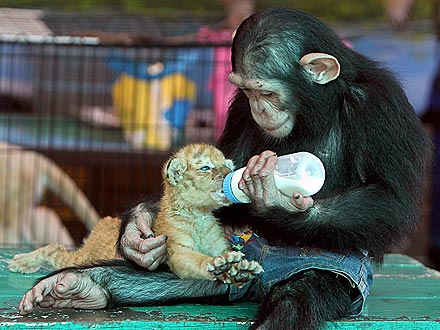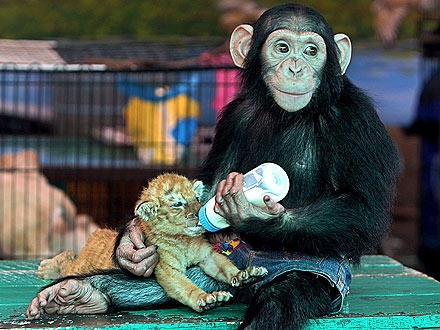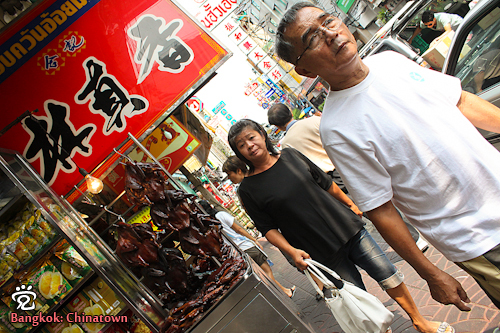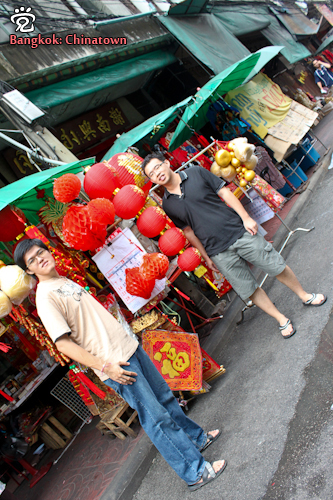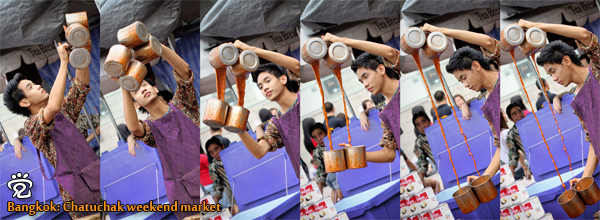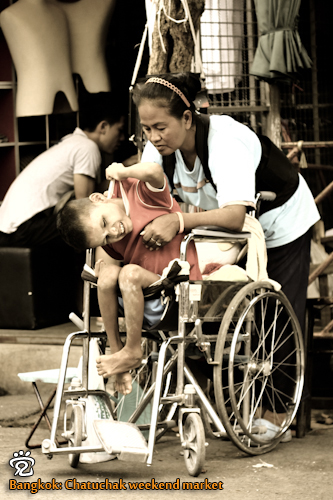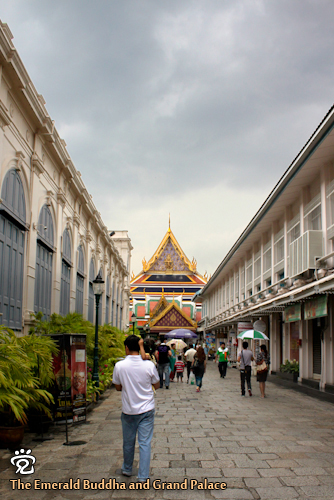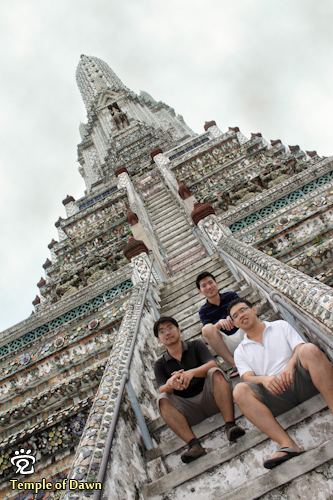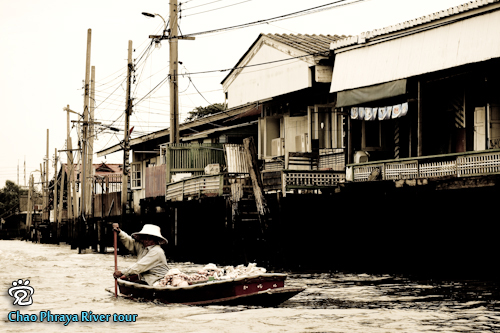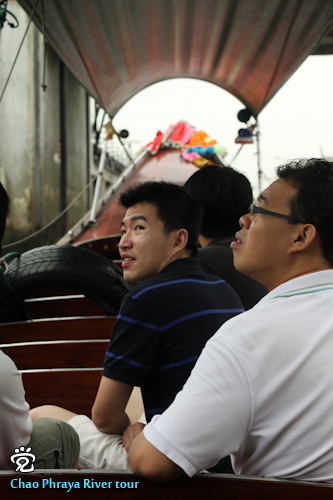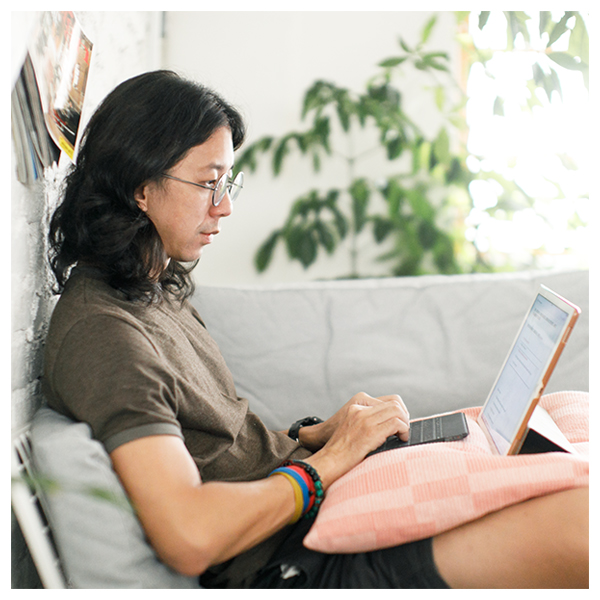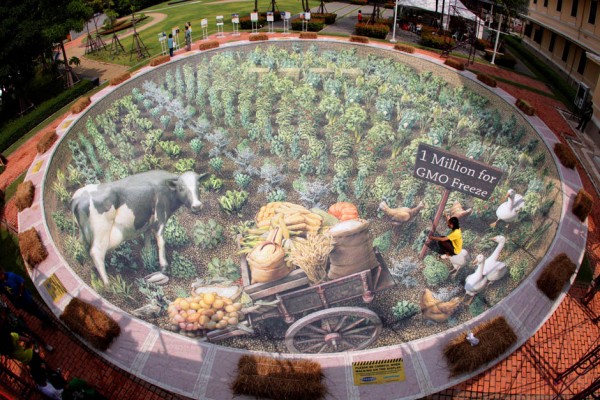
Handout picture taken on June 2, 2011 shows a Greenpeace activist posing for a photo on a 3D artwork representing an organic farm, at the Museum of Siam in Bangkok. Thailand´s rice masterplan recently outlined a policy aimed at keeping Thai rice free of genetically-modified organisms (GMOs). (image from Athit Perawongmetha/AFP/Getty Images)
Greenpeace today celebrated Thailand’s Rice Masterplan for keeping Thai rice free of genetically-modified organisms (GMOs). The GE-free rice policy, a key strategy in the Thai Rice Masterplan, protects Thailand’s thousands-year old rice heritage from the inherent risks posed by genetically-engineered (GE) crops.
For the occasion, Greenpeace unveiled a gigantic eco-friendly 3D artwork of an organic farm, an illustration of healthy, ecological farming, at Museum of Siam, Bangkok. The event comes ahead of the National Rice and Farmers Day on June 5th to celebrate the pride of Thai rice tradition and wisdom of Thai farmers who can produce safe food without the need of GE.
“The Thai government’s strategy to keep rice production GE-free is an acknowledgement embedded in government policy that genetically-engineered (GE) crops are unnecessary and a risk to a sustainable future for farming. This is a victory for rice farmers and consumers because it affirms the commitment of the Ministry of Agriculture and Cooperatives to keep rice farming sustainable and rice crops free of environmental and health risks associated with GE crops,” said Natwipha Ewasakul, Sustainable Agriculture Campaigner for Greenpeace Southeast Asia.
“Greenpeace supports this strategy and we are happy to assist the government keep rice GE-free from now on. We also welcome government commitment to keep this GE-free policy beyond 2011,” she added.
The current Thai Rice Masterplan conceived by the MoAC covers the enforcement period of 2007-2011. The plan committed to strengthening the nation’s rice production while promoting farmers’ livelihoods and consumer confidence. Keeping Thai rice GMO-free means that Thailand maintains its global leadership in rice production.
Greenpeace maintains that GMOs threaten the future and biodiversity of rice in Thailand, and will make farming, and farmers, dependent on agricultural inputs exclusively owned by giant multinational corporations who control GMO technologies.
The huge 3D artwork presented by Greenpeace today during the festivities stands for the millions people around the world who aspire for a sustainable and secure future of food. It was first launched in December 2010 front of the European Commission in Brussels, to accompany a signature petition by 1 million people clamouring for GE-free farming. The petition, organized together with Avaaz [1] is an unprecedented EU-wide citizens’ initiative aimed at the European Commission calling for safe food and stopping genetically modified crops in the EU. The artwork is an ecological farm symbolizing the future of agriculture with no GMO crops, surrounded by the 1 million names.
“The policy asserts how the need for agriculture that is good for the planet and people is important to our country and our economy. But it’s not just Thailand who stands to benefit from such a bold move. Consumers around the world know that they can trust Thai rice. These 1 million people know that GMO crops are bad for food and farming and this demand is shared by people in Thailand,” said Natwipha.
Greenpeace and the Thai Farmer’s Network also organized a Thai rice exhibition which traces the history and tradition of Thai rice, Thai rice varieties and the profound relationship between Thai people and their staple diet. The exhibition also highlights the threats and dangers of GMOs.
The 3D art work and the Thai farmer network’s exhibit will be open to the public from 2 to 5 June 2011. Meanwhile, Greenpeace’s exhibition on Thai Rice and GE-free farming will be open from 2 to 30 June at Museum of Siam, 10.00 am – 6.00 pm (daily, except Mondays).
Greenpeace is an independent global campaigning organisation that acts to change attitudes and behaviour, to protect and conserve the environment and to promote peace.
[source: http://www.greenpeace.org/seasia/Press-Centre/Press-Releases/Thai-GE-free-Rice/]
